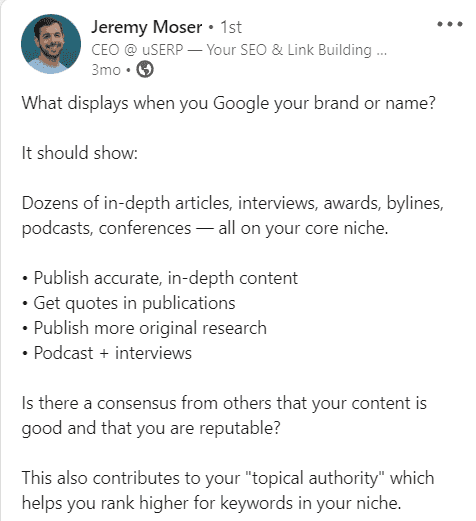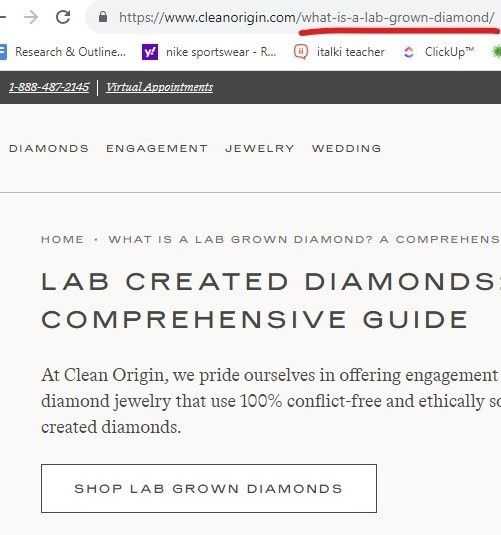How to Use Topic Clusters for SEO
Last updated on Monday, October 30, 2023

Ready to use topic clusters to uplevel your content strategy and build subject-matter authority?
We’ve got just the guide for you.
Read on to learn:
What topic clusters are
Why you should use them
How to use them
And how to create topic clusters for SEO purposes
Let’s begin!
What is a topic cluster and how do they apply to SEO?
A topic cluster is an interconnected network of articles and web pages centered around a central theme or umbrella topic.
With topic clusters, brands can dive deep into the core subject matter their audiences care about, enhance their site architectures, and improve search engine rankings.
Having a solid site architecture is crucial to supporting topic clusters. It’s the only way search engine spiders (and your target audience) can discover you.
By organizing your blog and site with topic clusters, you can provide a clear and logical structure. This makes it easier for search engines to recognize the relevance and authority of your content within the broader topics you’ve chosen.
A standout example of this strategy in action is Young and the Invested, a site dedicated to demystifying finance for parents, caregivers, and children.
Young and the Invested skillfully uses topic clusters by creating compelling content around finance-related topics its audience struggles with — primarily focusing on promoting financial literacy.
For instance, one of its main pillar topics is “investing strategies”, with supporting sub-topics, such as:
- How to invest as a teenager
- 12 best types of investment vehicles
- 4 best ways to invest $1,000 for a child’s future

By strategically interlinking these articles and pages, Young and the Invested ensures search engines recognize the depth and breadth of its expertise in financial literacy. This, in turn, boosts its visibility and credibility in the eyes of its target audience.
And speaking of credibility …
Why use topic clusters?
Creating clusters of content doesn’t just look organized and structured, it also helps satisfy Google’s E-E-A-T system, which stands for:
- Experience
- Expertise
- Authoritativeness
Trustworthiness
Google Quality Raters uses E-E-A-T to determine your site’s content quality.
Plain and simple: If your content doesn’t satisfy E-E-A-T, you’ll struggle to convince Google that your site has “topical authority”, meaning you won’t rank high for keywords in your niche.

And if you’re in a competitive space, this is a big problem.
In highly competitive niches, using topic clusters is a powerful SEO strategy that can significantly enhance your brand's online presence.
Take Breadcrumbs, a leading lead-scoring software company, for example.
By creating a comprehensive topic cluster centered around data-driven lead scoring, Breadcrumbs has managed to establish itself as an authority on the subject.
Its website is chocked full of informative content on lead scoring, covering subtopics, such as high-performing scoring models, automating lead scoring, and best practices for lead evaluation.
This hub of content not only improves its user experience but also signals to search engines that Breadcrumbs is a reliable source for lead-scoring knowledge.

How to use topic clusters for SEO purposes
Use topic clusters to determine the main pillar topics and subtopics your blog will be known for.
You’ll start by choosing core themes.
Then, you’ll identify related subjects to house under each core theme or “pillar”. Each pillar with related topics will be considered a content cluster.
Be sure to optimize your pillar topic pieces and your complementary articles with relevant keywords to encourage higher SEO rankings.
You can also create other content assets and lead-generation campaigns around your topic clusters.
More on lead generation in a bit!
How to create topic clusters
Here’s how to create topic clusters for your blog, step-by-step.
1. Know your target customers and core message
Who are you trying to reach with your content cluster model?
Product designers at unicorn SaaS startups? Data science directors at EdTech corporations? Vintage fashion resellers operating Etsy stores?
Be specific about who you’re building content pillars for and how doing so can help you hit your business goals.
For instance, “We’re trying to attract lead project managers at project management startups. We hope to win their business as premium SaaS subscribers”.
Next, understand your core message and competitive advantage.
What does your brand stand for? If people remembered one thing about your business, what would it be?
For example, a leading project management solution could choose a core message such as “Our project management app helps project managers shave 10+ hours a week off their schedules”.
2. Examine your audience’s pain points and how you can solve them better than the competition
Dig deeper into your target customers’ problems and the unique solutions you’ve built for them.
What are they struggling with? Why is your solution the best option for them? Put yourself in their shoes and consider how you can build trust with them.
Setting aside time to complete this exercise is key to getting in the right head space so you can create a topic cluster strategy that aligns with both your business and your target audience’s goals.
3. Turn your audience’s FAQs into pillar topics on your blog
What are your target audience’s top FAQs about your brand and solutions?
Get in their heads and examine past interactions you’ve had with them.
What do they need help with? What questions have they asked in the past? Discover questions in brand mentions, customer support tickets, and form inquiries. You can also check out Quora and Reddit for additional questions related to your brand.
Take a close look at your question list and circle any duplicates or key patterns you notice.
These questions will be the core topics and long-tail keywords you'll be targeting on your blog!
For example, let’s take a look at the content creation process Clean Origin used when it finalized one of its central pillars, called “What is a lab-grown diamond?”.
When strategizing blog post topics, Clean Origin reflected on its audience’s top pain point: The ability to choose the perfect diamond that’s conflict-free and eco-friendly.
It also reflected on the top solution it provides its audience:
Lab-grown diamonds that are both conflict-free and eco-friendly.
Finally, Clean Origin considered its target audience’s top FAQs on the solution it provides. One of the top questions was: “What is a lab-grown diamond?”
This question helped Clean Origin understand that it needed to educate its audience on its diamond creation process in order to build trust and prove its jewelry’s integrity.
And that’s when it created the following topic cluster page, listing “/what-is-a-lab-grown-diamond/” as its URL:

Here’s a quick breakdown of the cluster topic page Clean Origin created in this example:
Audience pain point: Choosing the perfect diamond that’s conflict-free and eco-friendly.
Top Question/Pillar Topic 1: What is a lab-grown diamond?
Title: Lab Created Diamonds: A Comprehensive Guide
URL: “/what-is-a-lab-grown-diamond/”:
Subtopics: “What is a lab-created diamond?” “How are lab-grown diamonds made?” “What are lab-grown diamonds made of?” More on subtopics in the next section

Once you have your main topics, it’s time to conduct keyword research to uncover additional content opportunities.
4. Pull subtopics and secondary keywords related to your pillar topics
Perform a detailed keyword analysis to uncover related topic ideas and semantic keywords. Simply plug your central topics into your keyword research tool and hit enter to generate relevant subtopics.
Take a good look at the keyword list in front of you when researching each content theme. Be sure to naturally integrate these secondary keywords into your content when writing your main pillar pieces.
You’ll also need to decide which of these keywords you’ll create content around. *These will be your subtopic pieces!
Look for repetition and patterns to solidify the most relevant options.
After choosing your subtopics, plug those into your keyword tool to pull secondary keywords. Again, you’ll need to be sure to weave these into your subtopic pieces to boost organic ranking potential.
Being intentional about the collection of content you create for your target customers is essential to providing information as close to their search intent as possible.
5. Make a lead magnet to accompany each pillar article or topic page to collect relevant leads
Create a lead magnet for each pillar piece (or topic page) to grow your email list and boost conversion opportunities.
When site visitors opt-in, nudge them to conversion with automated email marketing lead nurturing campaigns.
For instance, Clean Origin uses the following pop-up as its lead magnet on its “/what-is-a-lab-grown-diamond/” topic cluster page:

As you can see in the above image, Clean Origin entices site visitors with a $100 coupon they can apply to their next order if they sign up for email updates.
Other examples of lead magnets you can use to gather opt-ins include:
Ebooks
Ultimate guides
Cheat sheets
Checklists
Templates
Webinar invitations
Gated video content
You can also integrate these lead magnets into other marketing pages and initiatives to boost conversion potential. For instance, relevant landing pages, product pages, social media content, and ad campaigns.
Oh, and don’t forget to add internal links to these topic cluster pages. Internal linking from content hubs helps spread pank rank to other pages on your site. And it helps tell search engines how your pages are interconnected.
Wrap up
And there you have it.
We hope you enjoyed today’s quick guide on all things topic clusters for SEO!
Remember, to create your own topic clusters, be sure to:
- Know your target customers and core message
- Examine your audience’s pain points and how you can solve them better than the competition
- Turn your audience’s FAQs into pillar topics on your blog
- Pull subtopics and secondary keywords related to your pillar topics
- Make a lead magnet to accompany each pillar article or topic page to collect relevant leads That’s it, for now, SEOs.
Good luck creating your content clusters!
PS: On the hunt for a new keyword rank tracker? Then you’ll love AccuRanker! Get instant on-demand keyword updates any time you need them. Book a demo or sign up for your free trial today.

Article by:
Ioana Wilkinson
Content Writer for B2B brands
Ioana is a Business, Digital Marketing, and SaaS content writer for B2B brands. Born in Transylvania and raised in Texas, Ioana has been living the digital nomad life since 2016. From Barcelona to Puerto Vallarta to her new abode in windy Oklahoma City, you’ll never know where Ioana will head off next.


